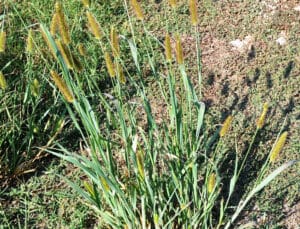Bellis perennis L.
Description
It produces basal rosettes that spread and form clumps or patches in turf. English daisy (Bellis perennis L.) produces small flowers with white petals and yellow centers that grow close to the ground. When flowering, it is one of the more attractive weed species that occurs in turf, and some landowners and park managers prefer to allow scattered patches to remain in the stand.
Life Cycle
English daisy is a member of the aster family (Asteraceae), and is considered a herbaceous perennial. Individual plants form short, thick rhizomes which produce new plants at nodes. This species produces flowers during the spring and seeds can be wind-disseminated and give rise to new plants.
Identification
English daisy produces short-statured rosettes of spatula-shaped leaves ranging from 1 to 2.5 inches in length. Leaves are rounded at the top and often have slightly serrated margins. Flowers of English daisy are 1 to 1.5 inches in diameter with many white petals encircling a central cluster of yellow disk florets.
Cultural Control
Infestations of English daisy can be reduced by improving turf density through good establishment procedures, use of turfgrasses well-adapted to site conditions, and fertilization. This weed can be suppressed or controlled with various postemergence herbicides.





